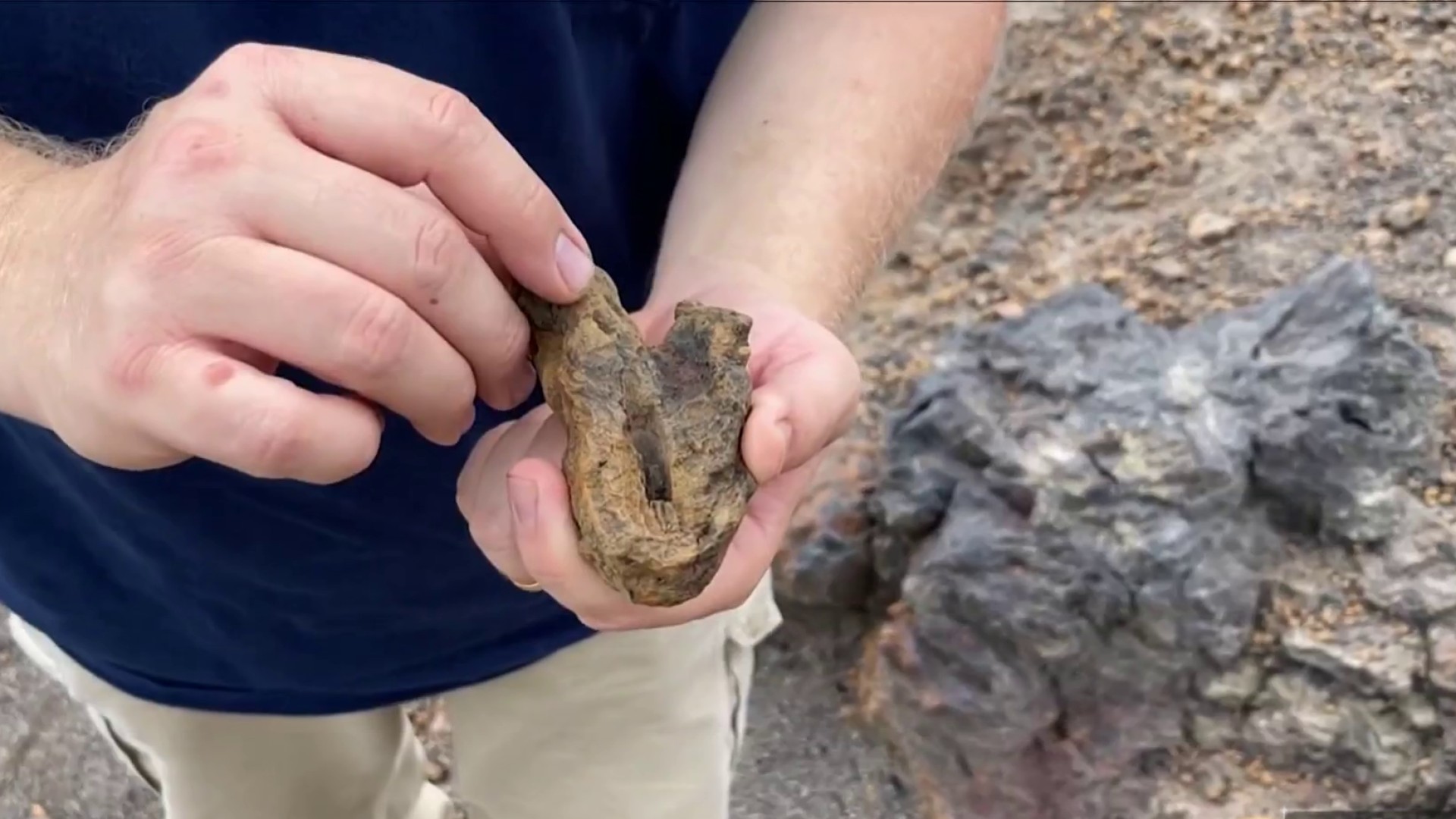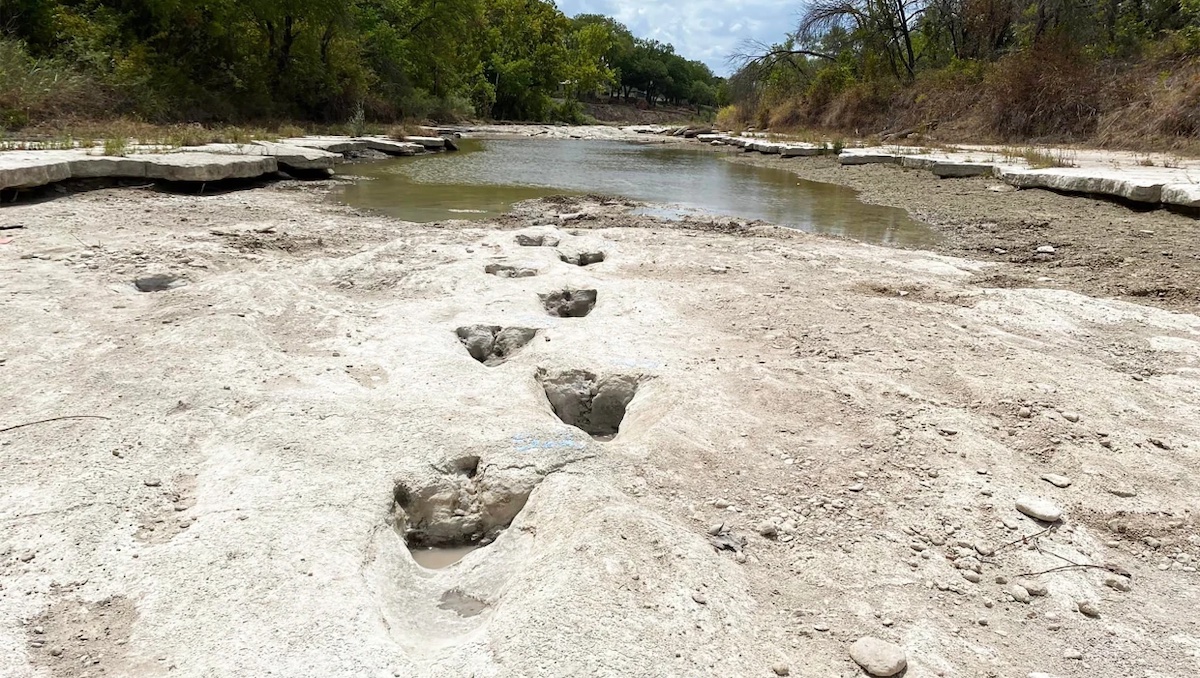If you have a friend or family member who missed their calling as a voice actor, it's their time to shine: the D.C. Public Library is holding its third annual Dinosaur Roaring Contest and is taking entries until Aug. 1.
What exactly does a dinosaur roaring contest entail?
According to the DCPL's website for the event, which started on June 21, they're "calling on dinosaur fans of all ages to share their best impressions of their dinosaur breed of choice."
In short: let loose, and let out that pterodactyl screech or T. Rex roar that you've been holding in since 2020.
According to Elaine Pelton, the mastermind behind the Dinosaur Roaring Contest and assistant manager at the Shaw branch of the library, the pandemic is part of the reason the contest began.
Pelton is in charge of children's programming at the library. During the depths of the pandemic in 2021, when most people were still staying at home, that part of her job became a real challenge.
"I was really bummed, because I couldn't really do a lot of children's programming and we weren't doing anything indoors or much of anything else," Pelton said. "So we were trying to figure out how to engage people virtually."
Pelton has made a habit of coming up with "unorthodox" programming ideas for some time. (She's also the mind behind DCPL's Evil Laugh Contest.) But when the pandemic limited her options, a unique viral news story sparked a new idea.
Also in 2021, one man's friend pranked him by putting up signs and leaving flyers around a South Carolina neighborhood, advertising a dinosaur roaring contest. The signs had the man's phone number -- but his friend didn't give him a head's up.
"So he's getting all these messages on his phone with people are like, 'O.K., are you ready? Are you ready for it?' And then they just roar, and he's got no idea what's going on and why people are leaving these messages on his phone," Pelton explained, laughing.
In addition to sparking joy, the prank made Pelton realize there was an untapped audience.
"I was like, wow, these adults have been waiting their whole life to show off this amazing talent that they have, and no one's ever asked them to share it," Pelton said. "There's got to be a demographic out there that will do this."
From there, it just came down to convincing her manager to give the contest the green light.
"You could see the wheels turning, and I'm like, 'No, no, no, stay with me!'" Pelton recalled.
And stay with her, Pelton's manager did: She approved the idea the next day.
"I wasn't exactly sure how it would pan out or what it would look like or how people would respond, but the response was overwhelming in terms of the families and people that participated," Pelton said.
Once they looked at all the entries, it "visually created a sense of community," Pelton said.
The contest tied people from around D.C. together, "from all different neighborhoods and all different ages and ethnicities," uniting them in a love of dinosaurs, Pelton said. "It just gave this sense of a unified community, which, it turned out to be really strangely beautiful."
And, Pelton suspects in part because of the way everybody got a little bit stir-crazy during the pandemic, the contest took off way beyond the District.
Winning submissions from the first contest included people from around the world. The grand prize winner in 2021 was a man from southern India, who was adamant about getting his trophy. According to Pelton, the trophy that year was about $5 -- far less than the shipping cost.
"I did ship [the trophy to him]," Pelton said. "I had to fill out a customs form and everything."
Two years later, the contest rules have been refined: Anyone from around the world is encouraged to enter, but if you want a physical prize, you need to list what D.C. public library you'll pick it up from if you win.
"Every entry we get, we love it," Pelton said.
There aren't any age limits to the contest, and everyone from infants to grown adults have taken part. The entrants who commit the most are sometimes surprising.
"We certainly have some enthusiastic kids that were just like, this is their life's ambition, right?" Pelton said. "But in general, it's the adults."
But committing to a realistic dinosaur roar isn't quite as easy as dinosaur fans would think.
What did real dinosaurs sound like?
"If you're really kind of going for most realistic, or -- best vocals is a category -- going for best vocals," Pelton said, "I would stay away from roaring. Even though we call it a dinosaur roar."
Dinosaurs, being closer to lizards or birds than mammals, were more likely to hiss or shriek than roar, Pelton said.
Of course, no one truly knows what dinosaurs would have sounded like, because they went extinct millions of years ago. But based on fossils and careful scientific research, paleontologists can come up with some hypotheses.
The prevailing scientific theory is that dinosaurs may have made similar noises to modern birds, according to Amy Balanoff, an assistant professor at the Johns Hopkins University Center for Functional Anatomy and Evolution. She's an expert in the evolution of the avian brain.
"What we know using the anatomy and some behavioral features of birds, what's become clear, is that birds are a branch of dinosaurs that survive the cretaceous extinction," Balanoff said. "So birds are dinosaurs."
A lot of scientists' understanding of dinosaur behavior and evolution comes from looking at birds and working backwards, because of that close relationship. Balanoff even refers to dinosaurs as we know them -- the large, fossilized creatures once assumed to be lizards -- as "non-avian dinosaurs."
"It's understanding the evolutionary history of dinosaurs to understand what their behaviors and what their anatomy was like," Balanoff said. "Looking at their close relatives, which would be living birds, can give us clues to what the non-avian dinosaurs, those extinct dinosaurs, were doing."
Just like there are hundreds of birds that produce hundreds of different bird calls, there were likely a wide range of dinosaur noises. That's also where it gets more difficult to tell what the vocalizations might have been.
Modern birds all use something called a syrinx to make noise. It's a structure made of cartilage, which they use instead of the vocal chords that humans speak with.
"It's all part of the trachea, all part of the windpipe more or less," Balanoff said. "But whereas we use our vocal folds, birds use this the syrinx, and it actually sits deep in their neck. And as air passes across the syrinx, it vibrates and and makes sound."
Because all modern birds have a syrinx, it's likely that the common ancestor for all birds also used a syrinx to talk, Balanoff explained. But because they're made of soft tissue and not bone, the syrinx doesn't usually fossilize -- so we don't know whether dinosaurs had them.
"There have been a few studies about, I think one came out recently about Ankylosaurs," which are the plant-eating dinosaurs with the club tails that often show up in children's books, Balanoff said. "And someone's hypothesized that based on the anatomy of some of the bones in the neck, that they might have made sounds similar to similar to what birds do. So little chirps and maybe some hisses and things like that."
The hypothesis is still controversial, and it's not the only one. A number of duck-billed dinosaurs have large crests on their heads, which some scientists believe allowed the dinosaurs to make resonating horn noises.
With new fossils still being discovered and studied, there's also more to learn.
"I just think this is so cool, that we can learn so much from anatomy, but also just from looking at living relatives of dinosaurs," Balanoff said. "The evolutionary history of the anatomy, I guess, is where it's all at."
Tips for entrants
For the purposes of the dinosaur roaring contest, though, it's not all about realism.
"We get submissions where people are really, really trying to be very realistic about dinosaurs, and there's shrieking and hissing," Pelton said. "And then we get people, you know, just dressed up in dinosaur costumes."
But it's more about the joy of it all. Pelton encourages entrants to have fun and be creative.
"We get people popping out from boxes and baskets," Pelton said. "We had one little girl in front of the Capitol with an ice cream truck and when her time came to roar, she just said, 'No,' and so she became a No-asaur."
But if you decide to enter this year's contest, you should be prepared to leave it all on the field: Some competitors really commit.
If you are one of the lucky winners, you can get a prize.
"The trophies are hysterical , and that is the main cost of the contest, because I use a service to have them actually personalized," Pelton said. "There are people out there in D.C. that have trophies that say, like, best pet entry vocals, DC Public Library Dinosaur Roaring Contest."
Grand prize winners get a trophy, while winners in other categories get a certificate. Kids often get a stuffed animal or a wind-up dinosaur toy.
The best advice Pelton has though, is to come up with an idea ahead of time, and commit to the bit.
"Just something that, you know, really makes the video stand out," Pelton said.
If your inner dinosaur is waiting to be unleashed, you can submit your entry here.




